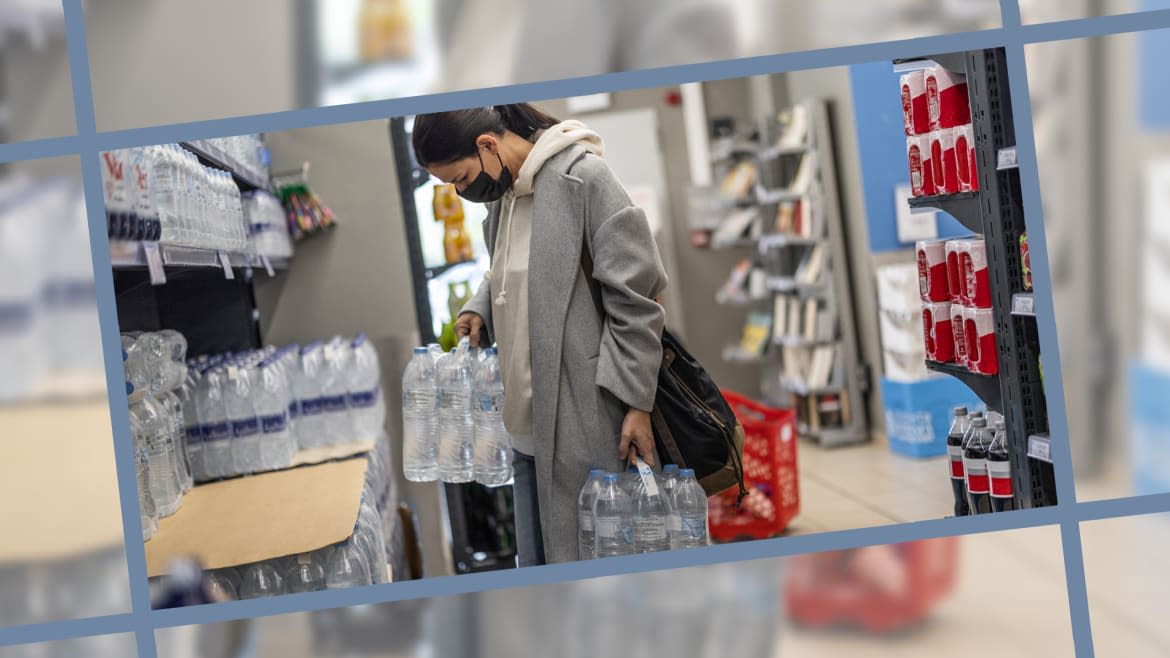Clean Water Is Becoming More and More Scarce—Here’s How You Can Prepare Yourself for a Water Shortage

Scouted selects products independently. If you purchase something from our posts, we may earn a small commission.
The recent headlines surrounding the Mississippi water crisis have been both sad and pretty anxiety-inducing. After all, clean water is essential for survival. Frankly, it feels like the world could end at any day now, and I’ll be honest, it freaks me out to see the stark and increasingly damaging impact of climate change in real-time. I just connected the dots that we’re living in the year The Jetsons took place but inching closer and closer to living in a full-on Mad Max world.
With so many severe droughts across the world right now, cities going days without clean drinking water due to water shortages, and the new intel that apparently all rainwater on Earth is no longer safe to drink due to PFAS chemicals (a.k.a. Teflon), it’s only natural to feel panicked about the future—and the present, for that matter.
Our tap water oftentimes contains dirt, chemicals, hard minerals, and lots of other impurities that both taste bad and can be unsafe to drink regularly. Some contaminants can potentially endanger our health, especially when the water contains microscopic organisms and bacteria. Filtering our water can help purify it, remove these contaminants, and make it safe to drink like our great grandparents used to be able to before privatized companies and our elected government ruined it!
In an attempt to quell my climate-change-induced anxiety, I’ve been researching how to prepare for a water shortage (and other emergencies) and the best ways to purify the water I drink and prepare for water shortages. See below for some of my findings.
Start by testing your water:
Luckily, there is a relatively cheap way to test your water supply. This 17-in-1 testing kit comes highly recommended by users on Amazon for its accuracy in telling you if your drinking water is high in anything other than just those essential H’s—2’s—and O’s. Depending on what your results are from this, I’d say you can now start shopping exactly what sort of filter you need.
Purify your water
According to the EPA, these are the general categories of drinking water contaminants:
Physical contaminants mostly impact the appearance and physical properties of the water. Some examples are sediment, sand, dirt, or other organic material suspended in the water from erosion in the soil.
Chemical contaminants are elements or compounds found in water. This type of contamination can be naturally occurring (doubtful) or man-made (likely). Some examples include nitrogen, bleach, salts, pesticides, metals, and toxins—now imagine you’re drinking that. Yum!
Biological contaminants are actual living organisms in water. These can also be referred to as microbes. A few examples of biological or microbial contaminants include bacteria, protozoa, viruses, and parasites.
Radiological contaminants are a type of chemical element that have an unbalanced number of protons and neutrons that result in unstable atoms that can emit ionizing radiation—not ideal for daily consumption, to say the least. Some examples include cesium, plutonium, and uranium. Yeah, no thanks!
You can opt for a premium water-filter pitcher (a little more pricey than your average Brita, but extra effective) or install a faucet mount or countertop filtration system (a better bet for ensuring the purest drinking water.)
Water crisis emergency prep
I might not be a full doomsday prepper, but I’m certainly in the camp that believes in preparedness for emergencies and natural disasters. It would be advisable to store some purified water in your home just in case of emergency. These are some helpful tips for long-term water storage, according to the CDC, along with some water emergency products to stock up on.
Label container as “drinking water” and include storage date
Replace stored water every six months.
Keep stored water in a place with a cool temperature (50–70°F).
Do not store water containers in direct sunlight.
Do not store water containers in areas where toxic substances, such as gasoline or pesticides are kept.
MORE FROM SCOUTED:
Don’t forget to check out our coupon site to find more health and fitness deals, including Vitacost coupons, Dick’s Sporting Goods coupons, Walmart coupons, and Macy’s coupons.
Get the Daily Beast's biggest scoops and scandals delivered right to your inbox. Sign up now.
Stay informed and gain unlimited access to the Daily Beast's unmatched reporting. Subscribe now.

